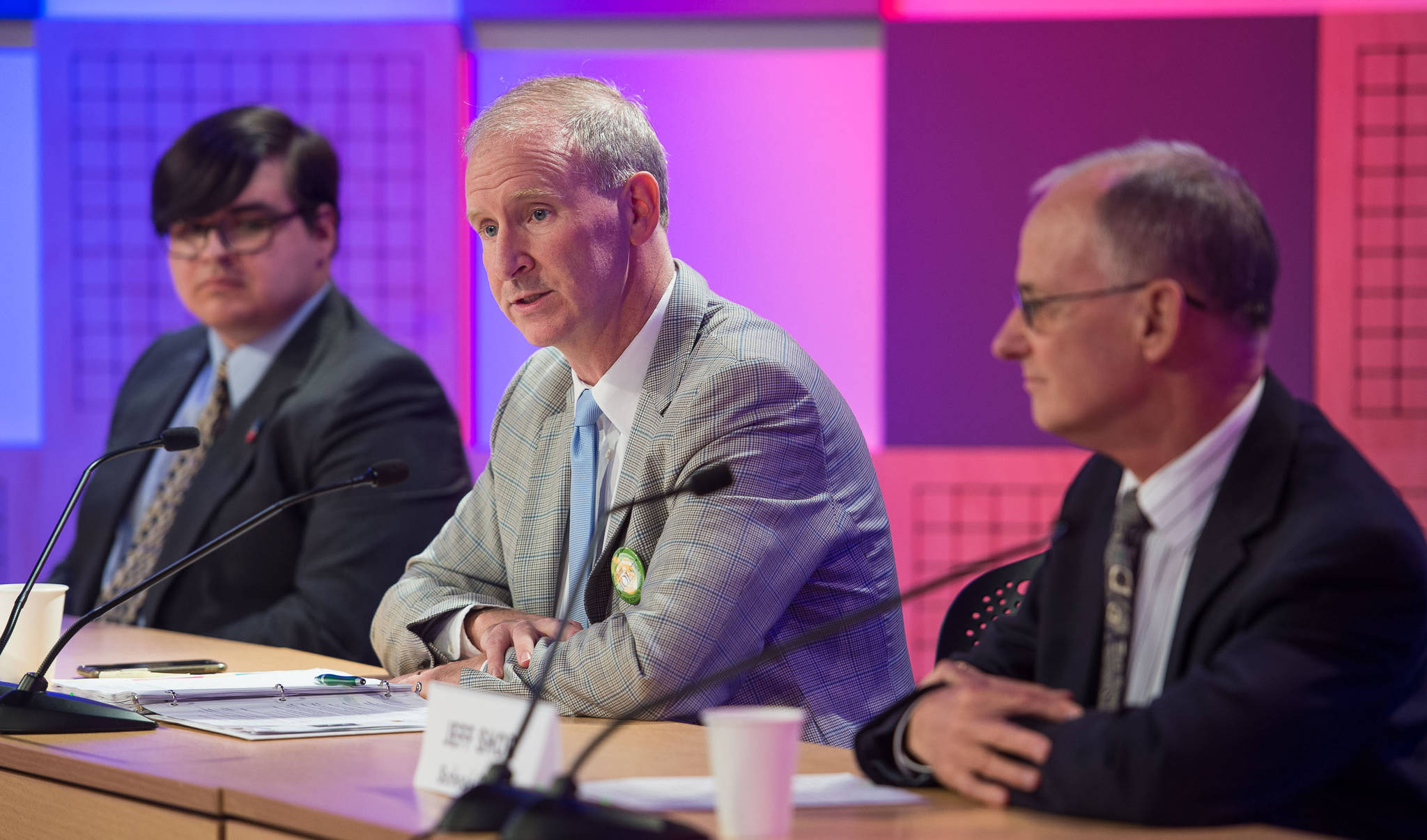For the most part, the three candidates for the Oct. 3 Board of Education election agreed on topics at the Juneau Votes! Candidate Forum on Monday night.
The three of them — incumbent Brian Holst and challengers Kevin Allen and Jeff Short — all felt the same about wanting to reduce truancy, approving of transgender bathrooms and wanting voters to approve Proposition 1 to extend the 1 percent sales tax increase in part to fund school repairs.
One topic that divided them, that was brought up publicly for the first time this election cycle, was the possibility of merging Juneau-Douglas High School and Thunder Mountain High School.
Thunder Mountain opened just eight years ago, but with enrollment declining across the school district, some in the community have argued that the schools should merge back into one. Midway through Monday’s candidate forum, which was moderated by reporters from the Empire and KTOO, the candidates (who are vying for two open seats this fall) were asked if they thought the two should be merged.
Holst, who is the current president of the school board, responded immediately that he is not in favor of a merger.
“It makes no sense, from many levels,” Holst said. “If we were to combine the two high schools into one, it would be a net cost increase of about $300,000, per the numbers that the school district ran last year.”
Holst, who is also the executive director of the Juneau Economic Development Council, said the state of Alaska’s formula for funding schools favors smaller learning environments. Having one large high school instead of two smaller ones, Holst said, would cost the school district money.
Allen agreed with Holst, also mentioning that if the two high schools were combined, Montessori Borealis Public Alternative School and Yaakoosgé Daakahídi Alternative High School would have to be cleared out from the Marie Drake Building to accommodate the influx of students back to Juneau-Douglas High School.
Allen, who graduated from Thunder Mountain in 2016, also said there are numerous students in the district who switch schools because of different learning needs and that would no longer be an option.
“When you’re talking about a student, all students learn differently,” Allen said. “Maybe they’re not learning as well as they could be at TM, so they move over to JD, or vice versa.”
Short, however, was open to the idea of merging the schools at some point down the line.
“I have yet to be persuaded that two high schools is something we have to stick with forever,” Short said. “I have yet to be persuaded by many of the arguments Mr. Holst has raised.”
Short cited the dwindling enrollment numbers, saying that high school enrollment was around 1,800 a few years ago and has dipped to around 1,300 now. Having a junior high school and a senior high school — that is, having students spend three grades at one high school building and the final three at the other — he said, could help solve the issue. These aren’t impending changes in the school system, he said, but possible solutions down the road.
Along the same lines, the candidates were also asked about combining school activities such as sports and academic clubs. This has already been discussed, particularly in respect to the two football teams. While Allen supported merging organizations if necessary, Holst said he didn’t support combining the activities “unless it would help increase participation rates.”
Short added that the fact that schools are facing the choice of whether or not to combine activities suggests that the district might have to start reconsidering having two high schools. On one hand, Short said, it does make sense to combine activities in order to save them.
“On the other hand,” Short said, “it suggests to me that we need to start looking harder at the configuration of how we’ve got our physical plan arrayed.”
• Contact reporter Alex McCarthy at 523-2271 or alex.mccarthy@juneauempire.com.

